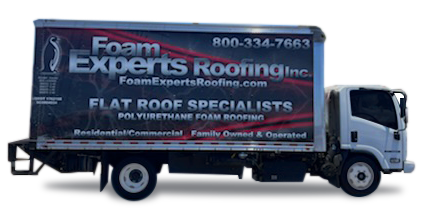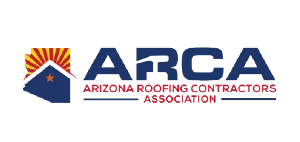Roofing is an essential component of any building, and choosing the right material is critical to ensure durability and longevity. Foam roofing has become a popular choice for roofers due to its numerous benefits and cost-effectiveness.
Foam roofing is a type of roofing material made of polyurethane foam, which is applied directly to the roof surface. It creates a seamless, waterproof layer that insulates the roof and protects it from water damage, UV radiation, and weather erosion. Foam roofing is a versatile material that can be used for both residential and commercial roofs.
If you’re wondering why roofers use foam, the answer lies in its benefits. Foam roofing offers excellent insulation, durability, and cost-effectiveness. Let’s take a closer look at why foam has become a preferred material for roofers.
Key Takeaways:
- Foam roofing is a popular choice for roofers due to its numerous benefits and cost-effectiveness.
- Foam roofing is made of polyurethane foam, which creates a seamless, waterproof layer that protects the roof from water damage, UV radiation, and weather erosion.
- The benefits of foam roofing include excellent insulation, durability, and cost-effectiveness.
The Benefits of Foam Roofing
If you’re considering foam roofing for your residential or commercial roof, it’s important to understand the advantages it can offer. Here are some of the key benefits of foam roofing:
- Excellent insulation properties: Foam roofing provides exceptional insulation, helping to keep your indoor space at a comfortable temperature and reducing your energy bills.
- Resistance to water penetration: Foam roofing creates a seamless, waterproof barrier that prevents leaks and water damage.
- Lightweight: Foam roofing is incredibly lightweight compared to traditional materials, which can reduce structural strain and make installation easier.
- Customizable: Foam roofing can be easily customized to fit any roof shape or size, ensuring a perfect fit and maximum protection.
- Long-lasting: With proper maintenance, foam roofing can last for decades, providing a durable and reliable roofing solution.
Overall, foam roofing provides a range of benefits that make it an attractive choice for both residential and commercial roofs.
Durability of Foam Roofing
When it comes to roofing materials, durability is a crucial factor to consider. Foam roofing is known for its outstanding longevity, making it a popular choice for roofers. There are several reasons why foam roofing is so durable, including:
| Factor | Explanation |
|---|---|
| Weather resistance | Foam roofing can withstand extreme weather conditions, including high winds, hail, and heavy rain. Its ability to expand and contract with temperature changes also contributes to its resilience in areas with fluctuating climates. |
| UV resistance | Foam roofing contains UV inhibitors that prevent it from breaking down or deteriorating due to exposure to sunlight. This feature makes it an ideal choice for roofs that receive a lot of direct sunlight. |
| Flexibility | Foam roofing remains flexible over time, which allows it to move and adjust without cracking or splitting. This property is particularly important in areas with seismic activity or frequent temperature changes. |
While foam roofing is highly durable, proper maintenance is also essential to extend its lifespan. This includes regular inspections and cleaning to remove debris and prevent water damage. In addition, addressing any necessary repairs promptly can help prevent damage from escalating and maintain the roof’s integrity.
Cost-Effectiveness of Foam Roofing
When it comes to roofing solutions, cost-effectiveness is always a top consideration. Foam roofing offers a cost-effective option for both residential and commercial roofs. The affordability of foam roofing materials and installation makes it an attractive choice for those looking to save money on their roofing projects.
But cost-effectiveness is not just about the upfront expenses. Foam roofing provides long-term savings through energy efficiency, reduced maintenance costs, and extended roof life. The excellent insulation properties of foam roofing help to regulate indoor temperatures, reducing heating and cooling costs. It also minimizes the need for frequent repairs, which can add up over time.
In addition, foam roofing is a lightweight material, which reduces the structural strain on your building. This lightweight nature also makes the installation process quicker and easier, which translates to lower labor costs. Overall, foam roofing is a smart investment in terms of both short-term and long-term cost savings.
Foam Roofing Installation Process
If you are considering foam roofing for your residential or commercial property, it is important to understand the installation process. While it is always best to hire professional roofers experienced in foam roofing, having a basic understanding of the process can help you make informed decisions.
The foam roofing installation process typically involves three main steps:
| Step | Description |
|---|---|
| 1. Surface preparation | Before applying foam, the surface must be thoroughly cleaned and prepared. This step involves removing any debris, repairing any damage, and ensuring a smooth surface for the foam to adhere to. |
| 2. Spray foam application | The next step is to apply the spray foam to the prepared surface using specialized equipment. The foam is sprayed in a liquid form that quickly expands and hardens, creating a seamless layer of insulation on the roof. |
| 3. Topcoat application | Once the foam is installed, a protective topcoat is applied to provide additional durability and weather resistance. The topcoat can be customized to meet specific color and texture preferences. |
It is important to note that foam roofing installation should only be performed by experienced roofers who use specialized equipment and follow proper safety protocols. Improper installation can result in poor performance, leaks, and other damage.
By hiring professional roofers and understanding the installation process, you can ensure a high-quality, durable foam roof for your property.
Foam Roofing Maintenance
Proper maintenance is crucial to ensure the longevity and effectiveness of your foam roofing. By following these guidelines, you can keep your foam roof in excellent condition for years to come.
- Regular Inspection: Inspect your foam roof at least twice a year, preferably in spring and fall. Look for signs of damage, wear and tear, or areas with water pooling. Address any issues promptly to prevent further damage.
- Cleaning: Clean your foam roof regularly to remove debris, leaves, and other materials that can accumulate on its surface. Use a soft-bristled brush or a broom to sweep away debris, and a garden hose or pressure washer to rinse the roof gently. Avoid using harsh chemicals or abrasive materials that could damage the roof.
- Repairs: Address any necessary repairs as soon as possible. Even small cracks or punctures can lead to leaks and water damage. Use a foam-compatible sealant to fill in any gaps or cracks in the foam, and replace any damaged topcoat as needed.
While regular maintenance is essential, it is also important to hire professional roofers experienced in foam roofing to perform inspections and repairs. They have the expertise and specialized equipment to identify and address any issues effectively.
By following these maintenance guidelines and working with experienced foam roofing professionals, you can maximize the lifespan and performance of your foam roof.
Environmental Considerations of Foam Roofing
As consumers become more environmentally conscious, the demand for sustainable roofing options has increased. Foam roofing offers several environmental benefits that make it an eco-friendly choice.
One of the most significant environmental advantages of foam roofing is its energy efficiency. Foam is an excellent insulator, which means it can help reduce heating and cooling costs by maintaining a consistent temperature in your building. This not only saves you money, but it also reduces energy consumption and lowers carbon emissions.
Additionally, foam roofing is made with environmentally friendly materials, such as water-based formulas and renewable resources like soy. These options reduce the amount of waste produced during installation and help minimize the environmental impact of your roofing project.
| Environmental Benefits of Foam Roofing: | |
|---|---|
| Energy efficiency | Lower energy consumption and carbon emissions |
| Sustainable materials | Reduce waste and environmental impact |
It’s also worth noting that foam roofing can be applied directly to your existing roof, eliminating the need for tearing off and disposing of the old roof. This not only saves time and money, but it also reduces waste and pollution associated with roof replacement.
When considering foam roofing for your roofing needs, it’s important to choose a professional roofer experienced in foam roofing installation. They can help ensure that the roofing materials used are sustainable and that the installation process is as environmentally friendly as possible.
Conclusion
In conclusion, choosing foam roofing provides several benefits such as excellent insulation and durability, which make it an affordable solution for residential and commercial properties. The installation process, which involves surface preparation, spray foam application, and topcoat application, is crucial in ensuring long-lasting service from the roofing system.
Maintenance is essential in keeping the roof in good condition, and regular inspections, cleaning, and necessary repairs can help prolong its lifespan. Regular professional inspections and maintenance are also imperative in keeping your foam roofing system at its best.
Moreover, foam roofing is eco-friendly and has environmental benefits to offer. It reduces energy consumption, limits carbon emissions, and minimizes waste. The availability of sustainable materials further highlights its environmental-friendly advantages.
With the above in mind, you can make an informed decision to determine whether foam roofing is the right choice for your property. Contact a professional roofer experienced in foam roofing installation for quality services and guidance on the best foam roofing solutions for your roofing requirements.
FAQ
Why do roofers use foam?
Roofers use foam because it offers numerous benefits, including excellent insulation properties, resistance to water penetration, and lightweight nature, which makes installation easier.
What are the benefits of foam roofing?
Foam roofing provides excellent insulation, resistance to water penetration, and reduces structural strain. It is also lightweight, which makes it easier to install.
How durable is foam roofing?
Foam roofing is known for its outstanding durability. It can withstand extreme weather conditions, resist UV radiation, and remain flexible over time. Proper maintenance can further enhance its durability.
Is foam roofing cost-effective?
Yes, foam roofing is cost-effective. It provides long-term savings through energy efficiency, reduced maintenance costs, and extended roof life. Foam roofing materials and installation are also affordable.
What is the foam roofing installation process?
The foam roofing installation process involves surface preparation, spray foam application, and topcoat application. It is important to hire professional roofers experienced in foam roofing installation.
How do I maintain foam roofing?
Proper maintenance is essential for foam roofing. Regular inspections, cleaning, and addressing necessary repairs are important. Regular professional inspections and maintenance are also recommended.
Are there any environmental considerations with foam roofing?
Yes, foam roofing is an eco-friendly choice. It reduces energy consumption, lowers carbon emissions, and minimizes waste. Sustainable foam roofing materials are also available.
If you’re interested in enhancing your home’s energy efficiency and reducing your utility bills, consider choosing foam roofing for your next roofing project.
Call Foam Experts Roofing Systems today at 480-835-5404
We are located at 1107 S Wilbur, Mesa, AZ 85210















